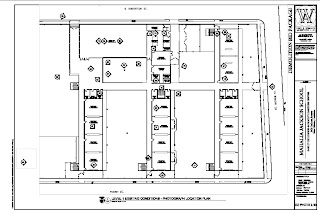 See the full article in nola.com (12/17/2007).
See the full article in nola.com (12/17/2007).
RSD okays demolition of 7 Orleans schools (1/17/08)
The schools set to be demolished include:
Abrams Elementary
Abramson High School
Mary D. Coghill Elementary
Ernest N. Morial Elementary
Helen S. Edwards Elementary
Joseph Hardin Elementary
Alfred Lawless High School
Meanwhile, the RSD is in the process of demolishing storm-damaged
portable buildings on 20 campuses. A total of 77 portable buildings
will be demolished at the following sites:
Abrams Elementary;
Bienville Elementary, 1456 Gardena Drive;
Bradley Elementary, 2401 Humanity Street;
Carver Middle and High, 3059 Higgins Boulevard;
Chester Elementary, 3929 Erato Street; J
Jean Gordon Elementary, 6101 Chatham Drive;
Gregory Middle, 1700 Pratt Drive;
Hardin Elementary, 2401 Maurice Avenue;
Jones Elementary, 1901 N. Galvez Street;
Jordan Elementary, 4348 Reynes Street;
Kennedy High, 5700 Wisner Boulevard.;
Lawless High, 5300 Law Street.;
Little Woods Elementary, 10200 Curran Boulevard.;
Morial Elementary, 7701 Grant Street;
Osborne Elementary, 6701 Curran Boulevard;
Parkview Elementary, 4617 Mirabeau Avenue;
Shaw Elementary, 2518 Arts Street;
Sherwood Forest Elementary, 4801 Maid Marion Drive;
Waters Elementary, 3800 Cadillac Street; and
Wheatley Elementary, 2300 Dumaine Street.
Special thanks to Keli Rylance, Head of the Tulane Southeastern Architectural Archive.
 In 1999 McDonogh 39 was renamed Avery Alexander to honor the civil rights leader. The school received about 5 feet of flood water and is (mostly) boarded up. The SFMPOP recommends “complete replacement.”
In 1999 McDonogh 39 was renamed Avery Alexander to honor the civil rights leader. The school received about 5 feet of flood water and is (mostly) boarded up. The SFMPOP recommends “complete replacement.”








